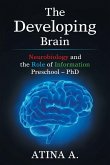The field of endocrine disruption has been the focus of increasing attention from scientists and the general public in the past 30 years, amidst concerns that exposure to environmental chemicals with the potential to alter endocrine system function, known as endocrine disrupting chemicals (EDCs), may be contributing to an overall decline in wildlife populations and the reproductive health of humans. These concerns are based on observations of adverse effects of EDCs on marine and land animals, an increased incidence of reproductive and endocrine disease in humans, epidemiological evidence for links between body burden and disease, and endocrine disruption in laboratory animals following exposure to EDCs. Owing to its role in regulation of endocrine function as well as its responsiveness to hormones, the developing brain is an especially vulnerable target for many classes of EDCs. This book will address the evidence for EDC action on the developing brain, organized into 7 chapters. Topics covered include background about EDCs, evidence for exposures, concerns about EDC effects in the developing organism, and particularly on the developing nervous system, how EDCs perturb the brain's neuroendocrine systems, transgenerational epigenetic effects of EDCs, EDC effects on non-reproductive behaviors, and future perspectives. This is the first book completely dedicated to understanding links between EDCs and the developing brain, an area of emerging importance for human health. Table of Contents: What Are Environmental Endocrine-Disrupting Chemicals (EDCs)? / EDC Exposures / EDCs and Development / EDCs and the Developing Brain / EDCs and Neuroendocrine Systems / Epigenetic Effects of EDCs / EDCs, the Brain, and the Future / Acknowledgments / References / Author Biographies
Hinweis: Dieser Artikel kann nur an eine deutsche Lieferadresse ausgeliefert werden.
Hinweis: Dieser Artikel kann nur an eine deutsche Lieferadresse ausgeliefert werden.








